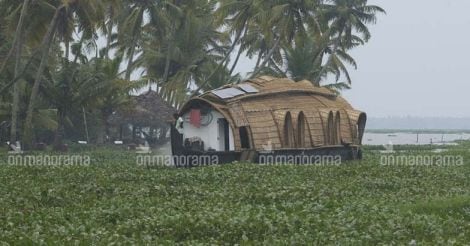Alappuzha: The salinity of Vembanad, the largest lake in the state, has rose about three-fold in a year, posing serious threat to the Kuttanad wetland ecosystem and drinking water projects in five rivers flowing down to the lake.
The Center for Heritage Studies submitted a report on the rising levels of chloride concentrations in Vembanad lake to the government after a study showed that the salinity of the stretch of the lake at Vaikom increased to 21 PPT (grams of salt per liter). It may be noted that the salinity level at the point was 7 PPT during the corresponding period a year ago.
It was also found that the salinity level in Thrikkunnapuzha, one of the gateways to the inland waterways of Alappuzha, rose to 19.94 PPT.
The samples collected from various parts of Kuttanad showed that the salinity levels rose by 6 PPT at Pathiramanal, 3.47 PTP at Thanneermukkom Bund, 1.9 PTP at Punnamada, and 2.1 PPT at Pallathuruthy. In previous years, the salt content of water in these areas was less than one-third of the current levels.
Both the Thrikkunnupuzha and the Vaikom stretch of the lake are vulnerable to seawater intrusion. The increased salinity level of the lake indicated the ineffectiveness of Thrikkunnupuzha lock and the Thannermukkom Bund regulator.
Since the salinity levels have showed a rising trend in January itself, it could be worse in the months of April and May, said center director Dr K G Padmakumar.
It would have an adverse impact on the farming sector in Kuttanad as well as the drinking water schemes scattered across Alappuzha, Kottayam and Pathanamthitta districts, he added.
As many as 2,600 hectors of paddy clusters are currently under ‘Puncha’ cultivation in Kuttanad. Due to delayed harvesting of the second crop season, the ‘Puncha’ cultivation was also being put over.
It requires adequate supply of water for 30-40 days to ensure that the highest possible yield is achieved. If the salinity levels further increase, the water from these sources would be unsuitable for irrigation.
Last year, about 2,800 hectors of paddy crop in coastal areas were damaged due to seepage of saline water into paddy fields. As a result, the farmers were forced to take measures to prevent intrusion of saline water into the areas under cultivation.
Going by the study report, the scenario could be worse this year.
Recently, Kottayam was in the grip of a severe drinking water scarcity after the authorities stopped pumping water due to the increased saline levels.
Read: Latest Kerala news | Acquitted of sleaze talk charge, AK Saseendran returns to Kerala cabinet

























